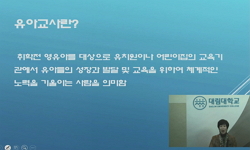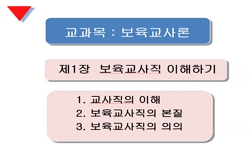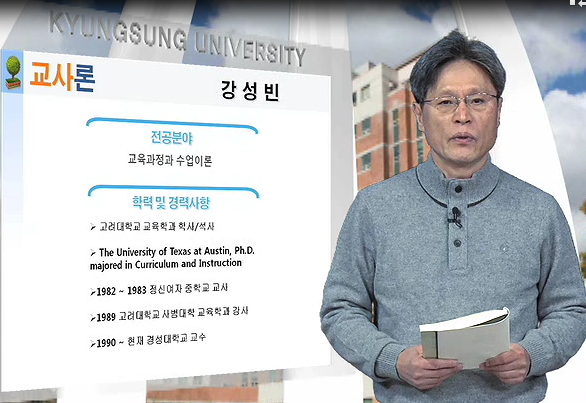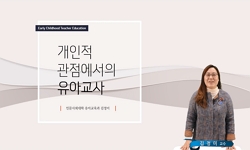This study attempts to investigate the relationship of the leadership style of a principal as on independent variable with the job satisfaction level of teachers under his / her supervision as the dependent variable. Followings are the objectives of t...
http://chineseinput.net/에서 pinyin(병음)방식으로 중국어를 변환할 수 있습니다.
변환된 중국어를 복사하여 사용하시면 됩니다.
- 中文 을 입력하시려면 zhongwen을 입력하시고 space를누르시면됩니다.
- 北京 을 입력하시려면 beijing을 입력하시고 space를 누르시면 됩니다.
學校長의 指導性 類型과 敎師의 職務滿足과의 關係 硏究 = (A) study on the relationship between the leadership style of principals and the level of teachers’job satisfaction
한글로보기https://www.riss.kr/link?id=T11029252
- 저자
-
발행사항
서울 : 明知大學校 敎育大學院, 1999
-
학위논문사항
학위논문(석사) -- 명지대학교 교육대학원 , 교육행정전공 , 1999. 8
-
발행연도
1999
-
작성언어
한국어
- 주제어
-
KDC
371.31 판사항(4)
-
발행국(도시)
서울
-
형태사항
104p. : 삽도 ; 26cm
-
일반주기명
참고문헌: p. 97-98
-
소장기관
-
0
상세조회 -
0
다운로드
부가정보
다국어 초록 (Multilingual Abstract)
This study attempts to investigate the relationship of the leadership style of a principal as on independent variable with the job satisfaction level of teachers under his / her supervision as the dependent variable. Followings are the objectives of this study in detail.
First, the leadership style of a principal recognized by teachers is analyzed.
Second, the job satisfaction level is measured and analyzed.
Third, the relationship between the two measurements above is analyzed.
For this purpose, the chosen target group for research was three hundred teachers who belonged to the public elementary schools at the Sea-dae-moon and Un-pyong Educational District of Seoul. The measurement instrument for the leadership of principals used is Noh Jong-hee's Leader Behavior Description Questionnaire (LBDQ-KOR) and the measurement instrument for job satisfaction levels used is K.T.O. (Korean Teacher Opinionnaire) developed by the Korean Federation over Teacher's Associations (KFTA) in 1982.
Data processing for the analysis is done using SPSS/PC+ for Social Science Statistical Techniques such as One-way analysis of varionce (One-way ANOVA), LSD estimation, Multiple Regression Analysis of Covariance, and product-moment Correlation Coefficient (PMR).
Findings from this study are as follows:
1. The result of analyzing leadership styles of principals recognized by teachers shows that the score in the administrative-systems domain and in the object-oriented domain decreased as compared with the study of Noh Gong-hee(1988). But on the other hand it increased in the human-oriented domain.
2. This study shows the bigger schools are, the more human-oriented the leadership styles of principals are.
3. The result of analysis on the teachers' job satisfaction shows that it is higher when the school is smaller in working-environment domain. But on the contrary it is higher when the school is bigger in the position level domain.
4. This study shows the teachers' job satisfaction level is higher between elder and experienced teachers than younger teachers. And it shows the younger teachers take a serious view in expertise-expending domain.
5. This study shows the teacher's job satisfaction level is higher when the principal is human-oriented. On the other hand when the principal is administration-oriented the teachers are good at administrative-systems.
6. The result of analysis on the teachers' job satistaction level shows it earned the highest scores in reward domain, next in human-oriented domain, the lowest scores in administrative-systems domain. So this study shows other factors are more important than the principals' leadership style on increasing teachers' job satisfaction level.
목차 (Table of Contents)
- 목차 = 1
- Ⅰ. 서론 = 7
- A. 연구의 필요성 = 7
- B. 연구의 목적 = 10
- C. 연구의 내용 = 11
- 목차 = 1
- Ⅰ. 서론 = 7
- A. 연구의 필요성 = 7
- B. 연구의 목적 = 10
- C. 연구의 내용 = 11
- D. 연구의 방법 = 11
- E. 연구의 제한 = 12
- Ⅱ. 이론적 배경 = 13
- A. 지도성 이론 = 13
- B. 지도성 이론의 접근 방법 = 15
- 1. 특성 이론적 접근 = 15
- 2. 상황이론적 접근 = 16
- 3. 행동이론적 접근 = 17
- 4. 지도성 유형에 대한 실증적 접근 = 18
- 1) 일차원적 접근 = 18
- 2) 이차원적 접근 = 23
- 3) 삼차원적 접근 = 29
- 5. 노종회의 지도성 연구 = 40
- 1) 학교장의 지도성 행동차원 = 40
- 2) 우리나라 학교장의 지도성 유형 = 43
- C. 직무만족도 = 45
- 1. 직무만족의 개념 = 45
- 2. 직무만족의 제어론 = 47
- 1) Maslow의 慾求位階에 관한 理論 = 48
- 2) McGregor의 X·Y이론 = 49
- 3) Herzberg의 動機-衛生理論 = 51
- 4) Argyris의 미성숙·성숙이론 = 53
- 3. 교사의 직무만족 요인 = 54
- D. 선행연구의 고찰 = 56
- 1. 지도성유형과 직무만족과의 관계에 대한 선행연구 = 57
- Ⅲ. 연구의 방법 및 절차 = 60
- A. 연구대상 및 표집 = 60
- B. 측정도구 = 60
- 1. 학교장의 지도성 유형 설문지 = 61
- 2. 교사의 직무만족도에 관한 설문지 = 61
- C. 자료의 처리 = 62
- Ⅳ. 연구결과의 분석 및 해석 = 64
- A. 조사대상자의 일반적 특성 = 64
- B. 교사의 개인특성에 따른 교사가 지각하는 학교장의 지도성행동 유형 = 65
- 1. 학급규모별 구분에 의한 학교장의 지도성 유형 = 65
- 2. 성별구분에 의한 학교장의 지도성 유형 = 67
- 3. 연령별 구분에 의한 학교장의 지도성 유형 = 67
- 4. 교육 경력별 구분에 의한 학교장의 지도성 유형 = 68
- 5. 직급별 구분에 의한 학교장의 지도성 유형 = 69
- C. 교사 개인 및 교육환경 특성에 따른 직무만족도 = 70
- 1. 학교규모에 따른 교사의 직무만족도 = 70
- 2. 성별에 따른 교사의 직무만족도 = 72
- 3. 연령에 따른 교사의 직무만족도 = 73
- 4. 교육경력별 교사의 직무만족도 = 76
- 5. 직급별 교사의 직무만족도 = 79
- D. 학교장의 지도성 유형과 교사의 직무만족도와의 관계 = 80
- 1. 학교장의 지도성 유형이 교사의 직무만족도에 미치는 영향 = 80
- 2. 학교장의 지도성 유형과 교사의 직무만족 하위요인과의 관계 = 81
- E. 학교장의 지도성 유형과 교사의 직무만족도와의 상관관계 분석 = 88
- Ⅴ. 요약, 결론 및 제언 = 89
- A. 요약 = 89
- B. 결론 및 제언 = 94
- 참고문헌 = 97
- ABSTRACT = 99
- 질문지 = 101











